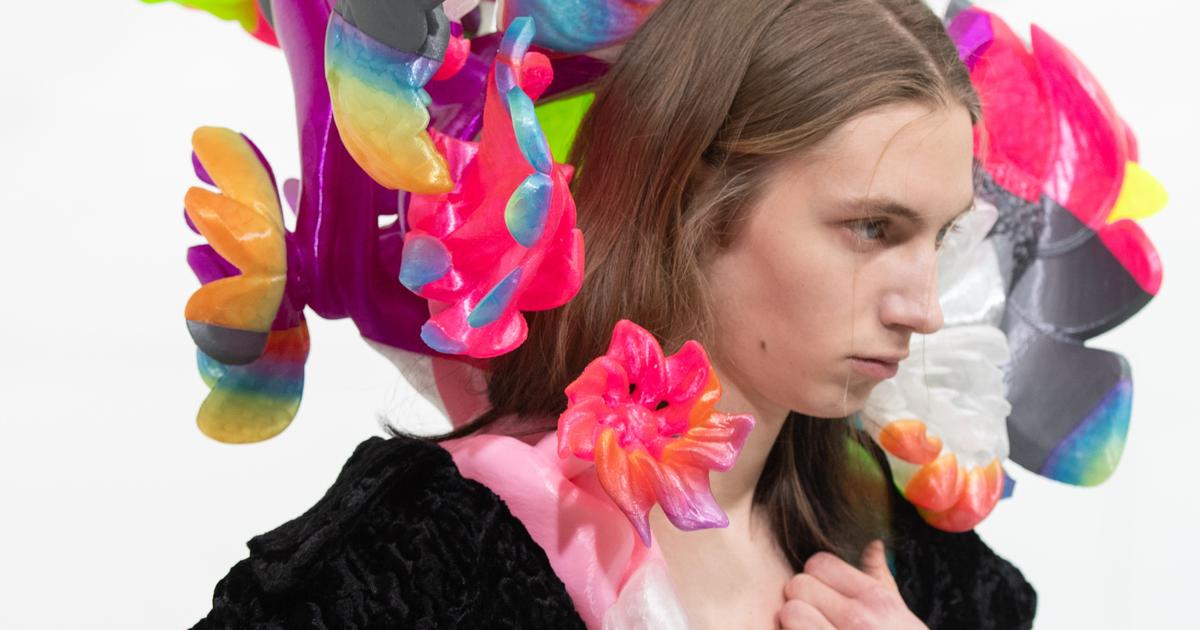Kookai, Camaïeu, Cop Copine, Pimkie... These women's ready-to-wear brands, most of which were born in the 1980s and 90s, had carved out a special place for themselves in the hearts of French women.
But after a succession of crises, bankruptcies and receiverships, they disappeared one after another from the fashion market.
And the list could go on and on.
Because today's brands no longer exist only to offer a wardrobe and a style, they now integrate environmental, societal and economic concerns into the design of their clothes, while playing the omnipresence on social networks.
Yann Rivoallan, president of the French Federation of women's ready-to-wear, looks back on the reasons for a failure and gives the leads for renewal.
Read alsoKookaï, Cop.Copine, André, San Marina... The puzzling bankruptcy of fashion brands in the 90s
Madame Figaro.- How do you explain that these French brands which were very successful in the 1990s are collapsing at the same time today?
Yann Rivoallan.-
The succession of crises has a lot to do with it.
We have an inflationary crisis, an energy crisis which has led to a logistics crisis, and with it the complexity of being able to have products delivered on time.
But also the Covid crisis which has left many traces, including the two months of rent paid when the brands had closed shop and were no longer making a turnover.
All this weakens any society.
Added to this are structural phenomena that should have forced these brands to change models.
I am thinking of the digital development present for twenty-five years which has led many of them to develop internationally.
However, some brands have not been able to "internationalise", as they
have not been able to work on a strong image on social networks, nor to avoid competition from ultra fast fashion.
We see it for example with Shein, a Chinese company established now for several years which is growing 100% every year.
In 2022, it made 30 billion dollars in turnover;
in 2021, 15 billion, and in 2020, 9 billion.
This development is explained by an extreme specialization in data management, organization and communication and the ability to be extremely efficient on TikTok.
The Chinese firm recruits thousands of influencers there to make advertisements that boast of the low prices it charges, while behind it, the working conditions are deplorable.
Employees are exploited, they work until
In video, “Who Made My Clothes”, textile workers dance against fast fashion
The share dedicated to online purchases by consumers is increasing a little more each year. How do you see the future of shopping in France?
Physical shopping is not dead, it remains largely dominant in France where it represents 80% of purchases.
We buy in store because there is a “sensory desire” which is still just as important.
The first time you try on a garment, whether it fits or not, an emotion emerges.
The fact of being able to try it in a store is considered a pleasure, because we have an assisted sale, a place that knows how to delight the consumer.
And I would say that the question is not "Is it buying online or in store?", but "how can a brand offer to alternate between these two means?".
Consumers want to have a very good in-store experience, like having access to a super quality of service, so that they can try it out at home.
The future of shopping will depend on this mix.
And then there is this question: “Why do we buy a product?”.
Do I want to buy it new, because I want something new, in the era of time?
Or do I want to buy a second-hand product for an ecological or price reason?
When we see that 5 million people go to France every day on Vinted, we understand that buying second-hand has become a habit that is taking hold.
occasion for an ecological or price reason?
When we see that 5 million people go to France every day on Vinted, we understand that buying second-hand has become a habit that is taking hold.
occasion for an ecological or price reason?
When we see that 5 million people go to France every day on Vinted, we understand that buying second-hand has become a habit that is taking hold.
The price appears more and more as a decisive element in times of weakened purchasing power. What are the weapons of French fashion brands to resist the rise of ultra fast fashion and second hand?
When a brand has a strong image, the price becomes less central in purchasing arbitration.
But it must be kept in mind that the consumer has been used to buying at a discount for more than fifteen years.
Moreover, we see it: when a brand makes reductions, massive purchases are directly triggered.
The difference will be played out in the ability to meet the increasingly precise expectations of consumers: they want to be able to
click & collect
, have reservations, or even be able to carry out simpler exchanges.
Everything is accentuated by this question of supply and the ability to be able to renew the ranges more easily, like being very close to the customer and being able to understand his tastes.
Read alsoCamaïeu is dead, in the total indifference of the fashion world
Independent shops and large brands are struggling to regain their level of activity before the health crisis, attendance is down sharply. What about window shopping? Have strolling consumers who find themselves in gangs
“
gone out of fashion
”
?
If we take the case of shopping malls, they too must reinvent themselves.
From the moment they manage to create “experiences”, I am thinking for example of concerts broadcast live and simultaneously in the other shopping centers of the same group, they manage to keep their social function.
Consumers can get together to have a good time.
During the Covid, we saw that you could communicate at home with your phone.
But, we always need to find each other, that's why cinemas still exist, shopping malls too.
Young people are no exception.
If we take the example of the cinema, they also meet there, to see strong films, which talk about their lives, which will release an emotion.
They are always in need of this tactile experience,
except that the new generation has been forged from the start by a totally digitized universe, driven by social networks.
She has a very strong agility between the virtual and physical universes, the latter being still as important, but simply put in arbitration compared to her expectations.



/cloudfront-eu-central-1.images.arcpublishing.com/prisa/EXMX7LMXCRANDCNNPR6YAPGU4E.jpg)




